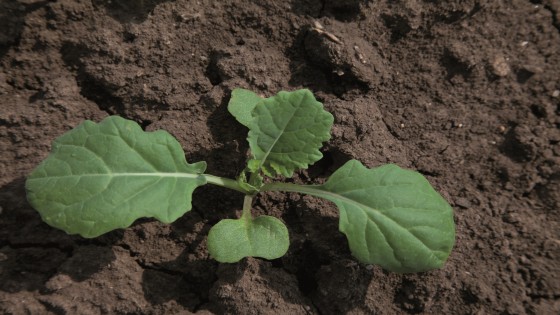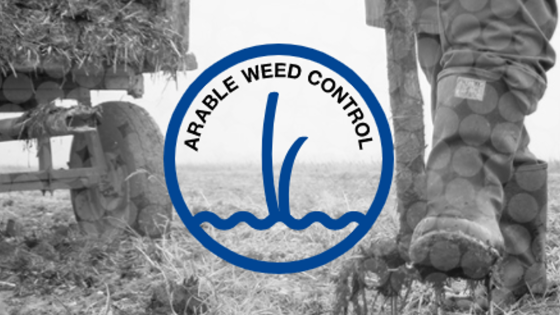Cultivation Principles - Volunteer Oilseed Rape
Control of Volunteer Oilseed Rape
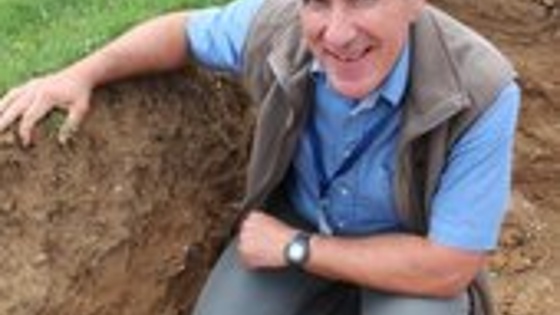
Philip Wright
Philip Wright was trained in agricultural engineering at Silsoe College, Bedford, gaining an Honours Degree in 1979. He became registered as a Chartered Engineer with the Engineering Council in 1990, and is a member of the Institution of Agricultural Engineers, the American Society of Agricultural and Biological Engineers and the British Society of Soil Science. Philip was technical director of Simba International (now Great Plains), the UK leading manufacturer of cultivations machinery, having been employed there since 1979.
As part of the BASF panel of Arable Weed Control experts, Philip will advise on cultivations and drilling techniques specifically targeting the control of various key weeds, for example how they respond soil disturbance, where the weed seed bank needs to be for best control [inverted/buried, or in the upper zone of maximum residual herbicide efficacy], plus the ideal scenarios for effective control – delayed drilling, spring cropping, other cultivations and residue/canopy management options, ideal cropping rotation sequences, etc.
Cultivation Strategy
Leave oilseed rape stubble untouched to prevent predation and the development of secondary dormancy.
Leave stubble for up to 4 weeks to allow for this.
Where soil is moist, shallow cultivations (up to 8cm) will keep the seed where it can germinate easily and it can be sprayed off prior to drilling to reduce populations.
Deep cultivations are more likely to place oilseed rape into dry conditions where there is a greater risk of becoming dormant but emergence of seed is significantly reduced.
Conventional, strip tillage and direct drilling are all appropriate when considering this weed. Note detailed comments on establishment.
Maintain seeds near the surface – avoid mixing surface and sub-surface soil horizons by tillage. Rolling stubbles can be effective to promote germination provided residues are well managed.
Rotation
Including cereal crops within the rotation will provide opportunities for control. Volunteer oilseed rape is difficult to control in broad-leaved crops such as beans, peas and sugar beet.
Other cultural controls
Cultural control is more difficult due to the size of the seedbank, the persistence of the seeds and their ability to germinate over a long periods. Minimise seed losses from oilseed rape prior to harvest by ensuring an even crop and at harvest by using the correct combine settings.
Residue Management
Ensure an even spread of residues and a good chop of straw to maximise herbicide efficacy and avoid unnecessary cultivations. Straw chopper knives need regular maintenance and changes – often 3 or more times a season depending on crops harvested and use.
Where appropriate (e.g. when direct drilling with appropriate equipment into high residue levels) leave a longer stubble. Mulching of high stubbles can be effective where straw needs time to become brittle after harvest.
Residue spreading and shallow stale seedbed cultivation by raking (multiple passes followed by glyphosate as needed) combined with surface rolling (for effective herbicide action, weed germination & slug management) or shallow discing/rolling is effective to manage residues, help control slugs, and create the best conditions to stimulate weeds outside the crop. Depth to be as shallow as possible, in any event, only just greater than drilling depth of following crop, ideally <5cm. Consolidate after tillage to maintain moisture in the stale seedbed. Surface consolidation is essential after shallow tillage, and through to depth pressing plus surface consolidation is needed following deeper tillage if this is needed.
Maintain seed bank horizons by controlled surface disturbance of all operations. Mixing weed seeds to variable depths reduces efficacy of residual herbicides and prolongs the germination period for weeds, plus allows future crops to be affected by high levels of this species.
Loosening as needed by low rake angle winged tines with adequate lift height for conditions and depth worked. Note ideally the loosening process should be carried out AHEAD of the oilseed rape crop as this is an ideal time for such operations, and gives the crop the best chance of performing well. When done effectively, loosening should not need to be repeated unless circumstances dictate – for example poor harvest conditions resulting in local re-compaction.
AT ALL COSTS avoid: (i) Deep non- inversion mixing; (ii) Failure to consolidate after soil disturbance as this will lose moisture and adversely affect germination potential of the weed seeds.
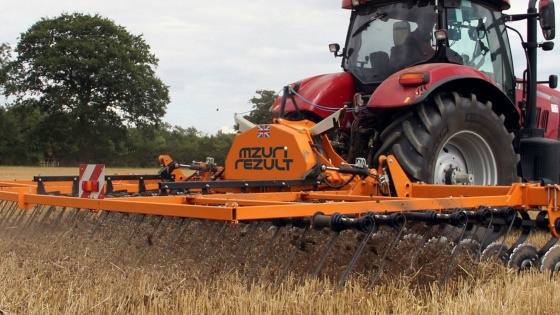
Residue Management: Ensure an even spread of residues across the field and a good chop of straw to maximise herbicide efficacy. Straw chopper knives need changing/reversing regularly – often 3 or more times a season.
Where appropriate (e.g. when direct drilling with appropriate drill into high residue levels) leave a longer stubble height. Stubble mulching of high stubbles can be used where straw needs time to become brittle after harvest.
Residue spreading and shallow stale seedbed cultivation by raking (multiple passes followed by glyphosate as needed) combined with surface rolling (for effective herbicide action, weed germination & slug management) or delayed shallow discing/rolling is effective to manage residues, control slugs, and create the best conditions to stimulate weeds outside the crop, and ahead of ploughing.
Rolling stubbles encourages weed seed to soil contact with minimal surface mixing
Depth to be only just greater than drilling depth of following crop, ideally ≤5cm. Consolidate after tillage to maintain moisture in the stale seedbed. Surface consolidation is essential after shallow tillage, plus surface consolidation is needed following deeper tillage. NOTE: Germination occurs in the dark even under residues, so delay deeper tillage or preferably, use the plough.
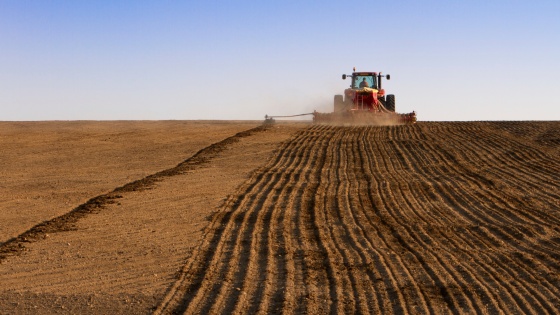
Ploughing will complement shallow surface disturbance by fully inverting and burying the surface seed bank to a depth of 15 to 20cm. As survival at depth is 2 years or less, ploughing reduces populations by 95%. Ploughing frequency needs to be appropriate for this. Effective burial by
1. Suitably narrow furrow width (30/35cm on heavier soils) and share width < furrow width
2. Sensible forward speed
3. Appropriately set skimmers
4. Post plough pressing to close the surface and exclude light
5. Pre-cultivation shallow if needed so soil/straw contact of the buried residues allows efficient breakdown and good rates of water movement through the profile.
Maintain seed bank horizons by controlled surface disturbance of any prior operations. Loosening only as needed if > plough depth by low rake angle winged tines with adequate lift height for conditions and depth worked. This controlled vertical fissuring also minimises disrupting the weed seed bank horizons. On heavy soils where deeper loosening is needed, provided conditions are suitably dry for fissuring, this operation could be left until after ploughing. Pressing when loosening will help to achieve the following seedbed, and a suitably low surface disturbance lifting action will avoid bringing buried residues and weed seeds back to the surface which is ESSENTIAL.
AT ALL COSTS avoid:
(i) deep non- inversion mixing
(ii) re-inversion before 2 or more years
(iii) failure to consolidate after soil disturbance as this will lose moisture and adversely affect germination potential of the following crop.

